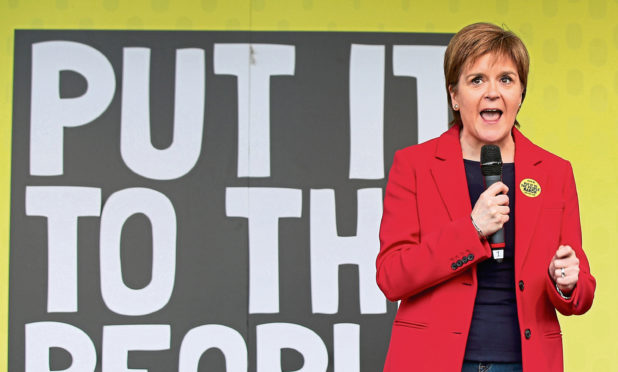In an ideal world, there would be no more talk of nationalism, nationalist movements and other divisive, xenophobic, introspective crusades.
As George Orwell argued in 1945, writing about post-war Europe, nationalism causes people to disregard common sense and to become more ignorant towards facts.
It is notions of nationalism that are wrenching Britain out of Europe now. Orwell would not have been a Brexiteer.
The world – past, present and future – would be a better place without nationalism, of that there is little doubt.
On a local level, Scotland, too, would be a better place if its Scottish nationalists disappeared, politically at least. And our Scottish National Party government would run the country more competently if it were not permanently distracted by pursuing its nationalist agenda.
But the word is not ideal, and in Scotland, as elsewhere, there will always be nationalists and they will always strive for the break-up of larger, more ethnically and culturally diverse kingdoms.
So any intervention from any quarter that seeks to slow the nationalist march is to be welcomed.
The latest in Scotland comes from the Electoral Commission, whose job it is to ensure fair play in elections held across the UK.
The watchdog has just raised a number of issues concerning Nicola Sturgeon’s plans to hold a second independence referendum by the end of 2020.
Sturgeon is in a hurry. Her thinking is that the opportunity to re-run the plebiscite that the nationalists lost convincingly in 2014 will vanish if her party does not win a majority in the next Scottish elections, due in 2021.
The party, in power since 2010, failed to maintain its majority in the last Holyrood poll in 2016, and has only been able to continue in government with the backing of the Greens.
Sturgeon has published legislation, yet to be passed by the Scottish Parliament, setting out her timetable for a quick exit strategy from the UK.
But now the Electoral Commission has slammed on the brakes. It is unhappy over the SNP’s haste and has set out a period of one year to consider Sturgeon’s proposals.
Crucially, it wishes to assess the question put to voters in the event of a second independence referendum getting the go-ahead.
In 2014, the then Prime Minister David Cameron gave in to most of the SNP’s demands, including the wording on ballot papers.
The electorate was asked: ‘Should Scotland be an independent country?’ – a straightforward Yes/No option which was seen to give pro-independence campaigners an advantage.
The ‘Yes’ camp was perceived to have had the more positive message and even though it ultimately lost, it has no desire to ask the question differently in a new referendum.
Sturgeon’s Bill states that as the Electoral Commission had already assessed the proposed question (in 2014) “it should not have to be assessed again”.
However, the commission ruled against a Yes/No question on EU membership during the 2016 European referendum – deciding Leave/Remain was more balanced – and defends its right to review the conditions surrounding another Scottish vote.
“The intelligibility of the referendum question is fundamental to voters’ ease of understanding and participation in the referendum and underpins the legitimacy of the outcome,” the commission said in a submission to Holyrood’s constitution committee.
If Scotland must repeat the polarising experience of 2014 – a ballot that we were assured at the time, by Sturgeon, was a once-in-a-generation vote – then surely achieving fairness and legitimacy would be the goal of all concerned.
To take such a mighty step, and be sure that irrevocable independence is something Scotland really wants, perhaps the commission should also demand a two thirds, not a simple, majority.
If the Brexit vote had been subject to this condition, the UK would not be spit almost 50/50 and plunged into an EU impasse at present.
Sturgeon is fighting the more strident voices within the nationalist circus, who are impatient for separation and would circumvent the democratic process altogether if they thought they could get away with a unilateral declaration of independence.
She has so far resisted such anarchism, but knows her party is increasingly split over her caution, and her own days at the top may be numbered.
Even so, she must embrace the Electoral Commission’s views and respect its authority. There are many hurdles before a second vote is put to Scotland, including the granting of a Section 30 order from Westminster – not likely under the current regime in Number 10.
Does Sturgeon want her dream of an independent Scotland realised in a scrupulously fair contest, where no side can ever challenge the other’s validity?
Or does she crave secession at any cost? For an answer to that, we will wait to see how she responds to the Electoral Commission’s entirely reasonable suggestions.
